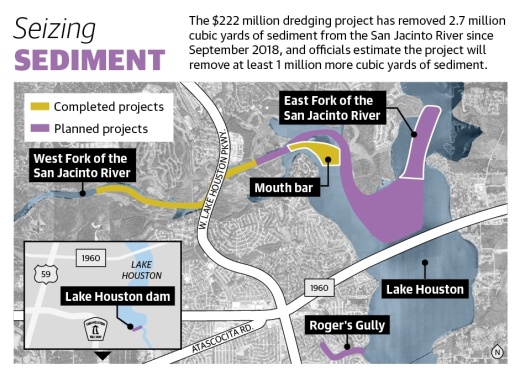The city has been working to add gates to the Lake Houston dam since Hurricane Harvey hit in August 2017. According to Houston Mayor Pro Tem Dave Martin, the shortcomings of the Lake Houston dam were highlighted during Harvey as it was overwhelmed with water being discharged at a rate of 425,000 cubic feet per second.
“It’s a structure that was never really meant to do what we want it to do, so with that comes some challenges,” Martin said.
Built in 1953, the dam consists of a spillway structure with four small gates, which can release water at a rate of 10,000 cubic feet per second. Martin said the initial plan to add roughly 1,000 feet of modern floodgates to the existing structure would have quadrupled the amount of water Lake Houston could release.
Stephen Costello, chief recovery officer for the city of Houston, said the newly proposed design would instead add 500 feet of gates to the spillway, although he noted the final design of the project will not be submitted until September. Costello said officials anticipate the Federal Emergency Management Agency will approve the project by Jan. 1, 2023, with construction beginning in either late spring or early summer and taking 18 months to complete.
The dam spillway improvement project is being funded through a FEMA hazard mitigation grant, the city of Houston and the Harris County Flood Control District, though officials did not specify the cost of the new proposal.
Additionally, Martin provided updates on roughly $222 million worth of dredging projects aimed at clearing out sediment and debris in the San Jacinto River and Lake Houston. The projects are being funded through FEMA, grant dollars from the Texas Water Development Board, the city of Houston and Harris County.
Since 2018, 2.7 million cubic yards of debris have been removed from the West Fork of the San Jacinto River as well as the mouth bar—a gathering of sediment at the confluence of the West Fork and Lake Houston. Martin said the next project would focus on the river’s East Fork followed by Roger’s Gulley and Lake Houston.





